Photographing Breeding Birds of the Arctic |
When a nature photographer happens to ask you during a conversation, "Have you ever been to Churchill, Manitoba?" more often than not, the first vision that comes to mind is Polar Bears and freezing cold weather. It is, after all, the Polar Bear capital of the world. I can tell you that most people will not think about photographing birds on the tundra in spring. If you are one of those who would not envision photographing birds out on the tundra of Churchill in the spring, then you are really missing a great part of what this area has to offer other than the bears.

Every serious (and not so serious) bird and nature photographer should visit Churchill at least once in a lifetime during mid to late June. June in Churchill is fresh, full of life and there are beautiful species of birds everywhere in glorious breeding plumage. With beautiful breeding colored feathers and landscape backdrops of light purple flowered and tundra landscapes you will be sure to capture stunning images of these beautiful birds.
Churchill is located where the Hudson Bay meets the Churchill River. It stands at an ecotone on the Hudson’s Plains where three distinct eco regions meet. It has boreal forest to the south, the arctic tundra to the northwest and Hudson Bay to the North.
The climate in Churchill is subarctic with long cold winters and short, cool summers. These cool summers are when the tundra hosts many different species of breeding arctic birds as well as Arctic Fox. More than 270 species of birds have been recorded within a 25 mile radius of the town of Churchill. This is truly amazing in a place that looks like it holds no life at first glance!
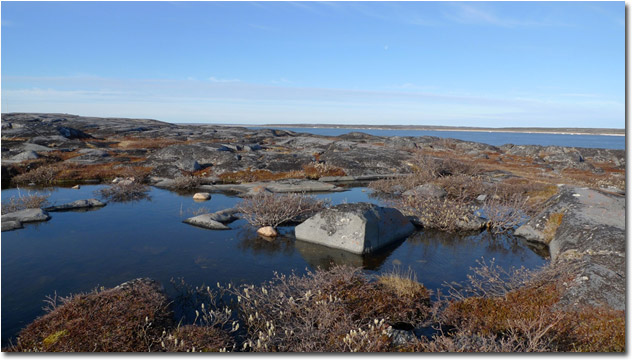
Upon arrival you may think to yourself something like "So this is Churchill" or "Where is everything, all I can see are big open Tundra plains?" Then you might ask yourself, why have I spent all this time and money getting here? Don’t worry though; many travelers have probably thought the same thing. It is not until you get settled in and spend the next few days roaming about the tundra and visiting the mouth of the Churchill River where it meets Hudson’s Bay that you will have the answers to your questions. Once you have experienced beautiful lichen covered rocks, seen and heard the gloriously colorful birds of the arctic, seen and touched the gentle Beluga Whales and gazed out at the soft glowing arctic sunset at midnight you will know why you are here.
Churchill in June can be downright pleasant weather wise. Average daytime temperatures range from 50 to 65 degrees Fahrenheit with fresh breezes coming in of Hudson Bay feeding the soft grasses and flowers of the tundra creating one of the planets nicest natural air fresheners.
In June the frozen tundra springs to life. As the ice melts birds arrive and mating and nesting begins and chicks start to hatch. Beautiful wildflowers such as Purple Paintbrush and Tufted Saxifrage blossom everywhere, creating fantastic backdrops.
On my first visit to Churchill in June 2007, I stared out at the somewhat barren looking tundra landscape and thought, "Where in the world will we find birds to photograph out there?" That question was quickly put to rest as we headed out with our guide to closely explore the landscape and look for our quarry. Once you are out there you realize just how diverse the pockets of landscapes and rock formations are in the area. We were photographing Common Eiders flying by us where the Hudson Bay meets the Churchill River, then we were photographing beautiful American Golden Plovers in stunning tundra flower surroundings and then we found ourselves photographing Red-necked Phalaropes in a pond in waders. And this was all on the first day! This place really produces in the spring as far as the variety of bird species is concerned.
Not only is Churchill amazing for the diversity of species to photograph in June, it is also a great place for landscape photography. The endless variety of rock formation along with the flowing rises in the tundra with all of its color in the spring make for some wonderful images.
Churchill is also steeped in history. A wide variety of mostly nomadic Arctic people have lived and hunted in the area since about 1000 AD. The Thule tribe arrived during this time and they later became widely known as the present day Inuit people. They survived by being great hunters of caribou, seals and musk oxen. In the early 1600’s a Danish expedition landed and stayed for the winter where Churchill now stands. Only 3 or 4 of the 65 who ventured there survived to return to Denmark.
In 1717 the Hudson’s Bay Company built the very first permanent settlement known as the Churchill River Post. This was primarily a trading post for the North American fur trade. The French invaded and took over the fort from the vastly outnumbered English and for decades this fort was used on and off as the fur trade declined. With the success of North American agriculture, Churchill eventually became, and still is, a major shipping port for the export of grains to Europe, Japan and Russia.
As of today the population of Churchill is about 50% non native, the other 50% consisting mostly of Chipewyan and Swampy Cree. Only about 5% are Inuit.
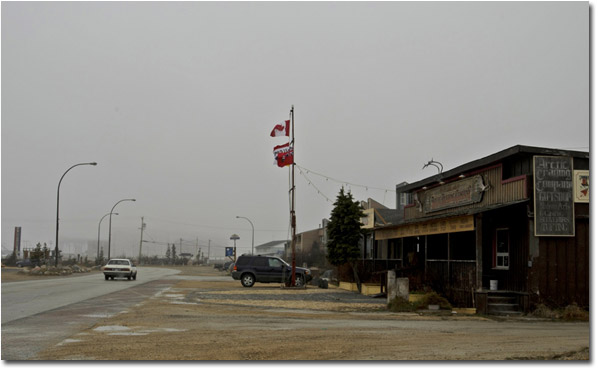
Let’s take a closer look at the species that we were there to photograph. These included Common Eiders, American Golden Plovers, Whimbrels, Red-necked Phalaropes, Arctic Terns, Willow Ptarmigans, Hudsonian Godwits and more.
Finding the birds to photograph is the first challenge here in Churchill. The first time I came here, we hired a fantastic bird guide by the name of Bonnie Chartier. She has written a great book on birding in this area and knew all the places to look. Like many arctic towns, there are a few dirt and gravel roads that traverse around the immediate area. A good portion of the first day or two is spent scouting the tundra looking for movement and colors amongst the lichen covered rocks, moss and just starting to bloom tundra flowers.
One of the first species spotted this year was the wonderful American Golden Plover in its beautifully colored breeding plumage. This species of shorebird is considered to be the fastest flier of all shorebirds with top speeds of 60mph! They fly up to 20,000 miles per year to migrate and nest sometimes flying nonstop over the Atlantic for 3500 miles.
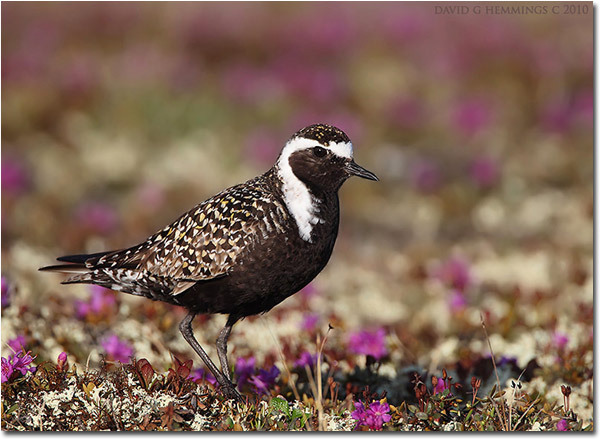
One of our other highly sought after birds was the Whimbrel. The Whimbrel is part of the Curlew family of birds. It is one of the largest of the Curlew family averaging 16 inches in length with a long curved bill. They too nest out on the tundra and feed on small invertebrates, small crabs and butterflies. They will also fill up on berries before migration.
The Parasitic Jaeger gets its name from the two main strategies it employs to acquire food. Parasitic refers to the habit this bird has of chasing gulls and terns to make them drop their food so it can pillage it. The second word is German for hunter. The Parasitic jaeger will at times hunt for its food and feeds on small birds, lemmings and eggs.
One of the best looking duck species in my opinion are the family of Eiders. The Eider commonly seen in Churchill at this time of year is the Common Eider. The Common Eider is the largest duck in the Northern Hemisphere. There is a famous colony of these ducks on the Farne Islands in Northumberland, Britain. This colony was the subject of one of history’s first known bird protection laws. About 1,000 pairs still nest there every year.
One of the tundra birds that are a real treat to see in their breeding plumage are the Willow Ptarmigans (pronounced “tarmigan”). The male is white with red eyebrows commonly known as wattles and rust brown colors while the female is a mixture of beautiful brown, rust and yellowish gold tones. In the winter, the Ptamigans fly into snow banks to roost as not to leave footprints that make them easier prey for wolves and foxes.
One of the more interesting species in my opinion in Churchill is the Bonaparte’s Gull. This gull has a distinctive black head with red feet in breeding season. It is named after a nephew of Napoleon, Charles Lucien Bonaparte who was a leading ornithologist in the 1800’s in America and Europe. An interesting fact about this species is that it is the only gull species that will often nest in trees.
One of the more commonly seen, but no less interesting, species in Churchill is the Semipalmated Plover. The term “semipalmated” refers to the partially webbed feet on this bird. They usually nest in areas with very little or no plant growth such as open tundra, beaches and, quite often, on gravel roadsides. They forage for food close to their nests and usually eat insects, crustaceans and worms.
Another species that we were hoping to see and photograph was the Short-billed Dowitcher. It is very colorful in its breeding plumage. It was the last day of the trip before we actually found one foraging in a small pond by the side of a road. Never stop looking! It is fascinating to watch one of these birds feeding as it rapidly probes its beak in and out of the mud in a sewing machine type action.
One other shorebird that we hoped to see was the Hudsonian Godwit. They will often hang out on the top of small pines and call to their mate. We managed to find this in the field but it was a grey and drizzly day. We were happy to have seen and photographed the species nonetheless. After breeding in the Churchill area this bird will make a several thousand mile non -stop flight to southern South America.
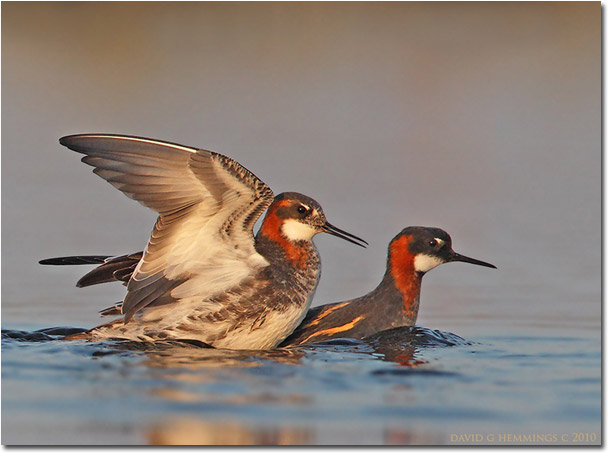
Probably our most sought after species to photograph in Churchill was the Pacific Loon. The Pacific Loons nest in the Churchill area but can be difficult to find. If you do find a nest it is very difficult to get close enough for images as we want to keep any disturbance to a minimum. Usually the best photo ops will come from non nesting younger males. This year we got lucky and photographed one close to a nest.
Nature’s Photo Adventures operates photography workshops in Churchill every year in June. We have spent a lot of time there and we know all the best spots for photography opportunities. Check out our website at www.naturesphotoadventures.com for all of the details and costs.
Here is some information about Churchill that you should know -
Camera Gear:
- Your longest lens (at least a 300mm + 1.4x and / or 1.7x tele-converter)
- A wide angle lens
- 1-2 camera bodies
- Batteries and chargers
- Storage (flash cards and laptop or digital storage media is recommended)
- A tripod
- A flash
- A good bag to carry all of your gear in the van / in the field.
Additional Gear:
- Weatherproof Boots (Goretex hiking boots or good quality rubber boots)
- Warm clothes – layers are best as the temperature can vary at this time of year.
- Waterproof jacket
- Fleece jacket
- Long underwear
- Warm socks!
- Bug nets
- Neoprene or rubber gloves (just in case the mosquitoes get nasty)
- Bug spray
- Plus all of your normal personal items and equipment
A note about bugs: Churchill at this time of the year generally has a cool breeze that keeps the mosquitoes away (or at least bearable). The most important thing for this photo adventure is to be prepared. If you have a physical barrier between yourself and the bugs they are no problem! We are recommending that everyone bring long pants that bugs cant bite through, a weatherproof shell, gloves that are thick enough or durable enough that bugs cant bite through and a bug net mask. If we all are prepared for the bugs they will not be a problem.
Weather: Don’t forget that Churchill is far north! The daytime temperatures in June range from about 2-15 degrees. Churchill is one of those places that can get all seasons in one day. So be prepared for all types of weather by dressing in layers.
I hope that you enjoyed learning about and seeing the images of some of the species we saw in the Churchill tundra in June. Maybe we will see you one of these summers on a Nature’s Photo Adventures trip to Churchill to photograph these and many more species of the Arctic tundra.
|
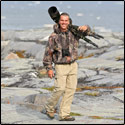 David Hemmings a passionate bird and wildlife photographer living in Ontario, Canada and is the president of Nature’s Photo Adventures, a „Photographic Learning Travel Adventure“ company specializing in teaching others all about nature photography at many locations around the globe. He has been photographing wildlife for about 10 years. David loves to travel the world to see and photograph different species of birds and animals.
David Hemmings a passionate bird and wildlife photographer living in Ontario, Canada and is the president of Nature’s Photo Adventures, a „Photographic Learning Travel Adventure“ company specializing in teaching others all about nature photography at many locations around the globe. He has been photographing wildlife for about 10 years. David loves to travel the world to see and photograph different species of birds and animals.
David has been published on the cover of National Geographic, Canadian Geographic and has also appeared on the cover of numerous nature photography publications. He is one of seven bird photographers that have their work in a published hardcover book entitled On Feathered Wings. He is also one of four photographers whose works are currently on display as part of an exhibit at the American Museum of Natural History Ornithology Department in New York City.
You can see more of David’s work and learn more about his photo tours at www.naturesphotoadventures.com and www.davidhemmingsbirdphotography.com.